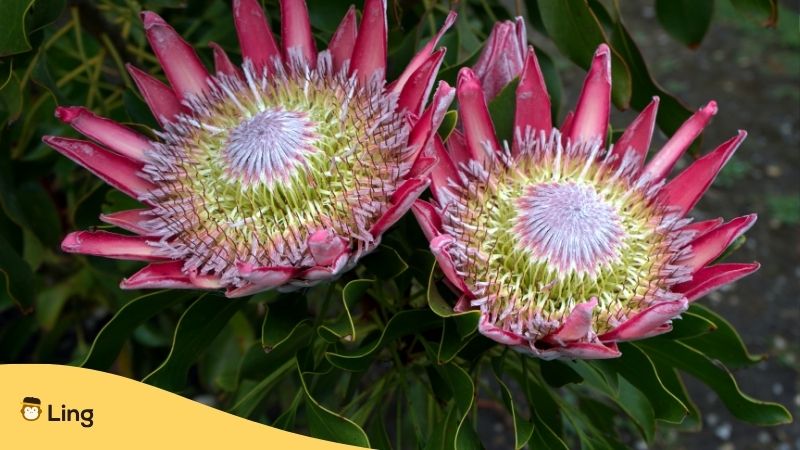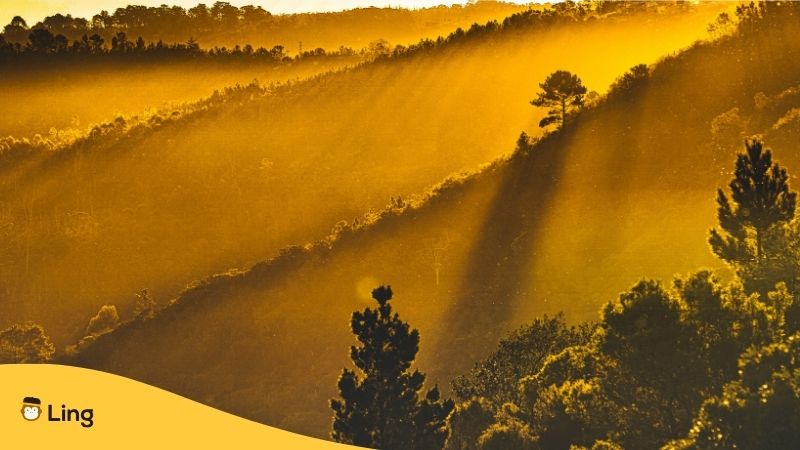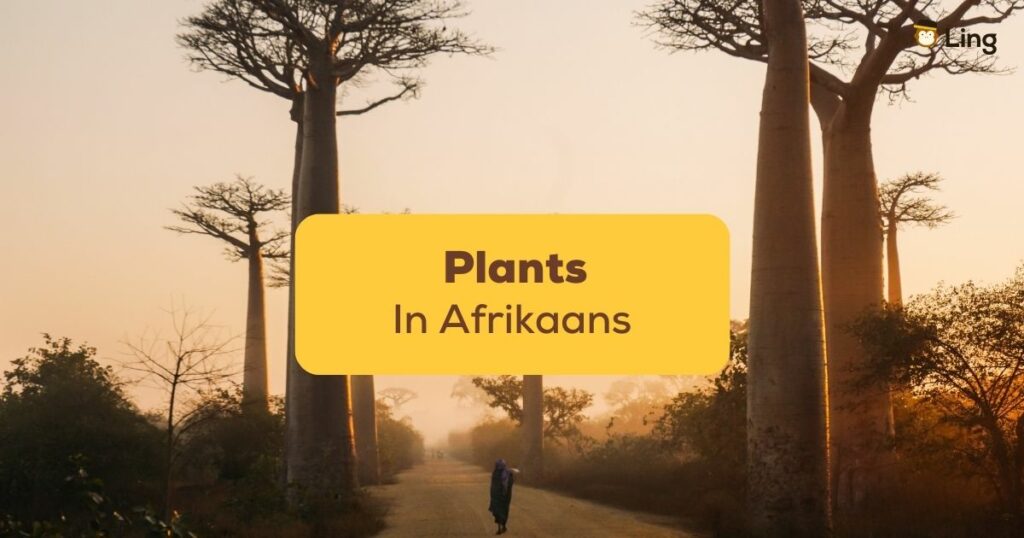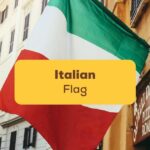South Africa is renowned for breathtaking landscapes of every description, from the arid beauty of the Karoo to the lush forests of the Garden Route. But it’s not just the scenery that’s diverse; the country’s flora and fauna are equally remarkable, as are the names of plants in Afrikaans. South Africa is home to a staggering number of plant species, many of which are found nowhere else on Earth.
This time, we’ll be exploring the plants of South Africa and discovering the exquisite names of those plants in Afrikaans.
Plants In Afrikaans Native To South Africa
Now, let’s delve into the fascinating world of South African plants and their names in Afrikaans, a language that adds a touch of cultural richness to the experience.
1. Baobab Tree (Adansonia Digitata) – Kremetartboom
Instantly recognized as a symbol of Africa, the Baobab Tree, or “Kremetartboom” is a massive, iconic tree with a distinctive, swollen trunk. These trees can live for thousands of years and are an essential part of African folklore and culture.
2. Bird Of Paradise (Strelitzia Reginae) – Koningin Van Die Paradys
The Strelitzia reginae, commonly known as the Bird of Paradise flower, is a plan native to South Africa, South America, and other regions. It has an Afrikaans name that perfectly suits its exotic appearance: “Koningin van die Paradys.” These Afrikaans words describe striking orange and blue flowers that resemble the plumage of a tropical bird and are often planted to be used in floral arrangements.

3. King Protea (Protea Cynaroides) – Koninginprotea
The Protea cynaroides, also known as the King Protea, is South Africa’s national flower and a symbol of hope and change. Its striking appearance with large, showy, pinkish-purple flower heads resembling a crown has earned it the regal name “Koninginprotea” in Afrikaans.
The Koninginprotea is found mainly in the Western and Eastern Cape provinces and thrives in the fynbos biome. The plant’s ability to survive long periods of drought and regenerate after wildfires marks it as a symbol of the resilience of South Africa. It is no coincidence that the South African cricket team is known as “The Proteas.”
4. Bitter Aloe (Aloe ferox) – Bitteraalwyn
The Aloe ferox, or Bitteraalwyn, is a rugged and hardy succulent native to South Africa. This plant is famous for its medicinal properties, and the bitter sap from its leaves is used in various traditional remedies. The name “Bitteraalwyn” reflects the plant’s bitter taste and the aloe family to which it belongs.
5. Common Coral-Tree (Erythrina Lysistemon) – Koraalboom
The Erythrina lysistemon, known as the Coral Tree in English, is called “Koraalboom” in Afrikaans. This striking tree produces bright red flowers, resembling coral, which bloom during South Africa’s spring and summer seasons, and can be found in several African countries. It is not only a beautiful ornamental tree for planting but also plays a crucial role in supporting local bird and insect species.
6. Red Bush (Aspalathus Linearis) – Rooibos
“Rooibos” is a word that means “red bush” in the Afrikaans language, which describes the plant’s vibrant red stems and leaves. Rooibos tea, made from the leaves and seeds of this plant, is celebrated for its delightful flavor and numerous health benefits.
7. Honeybush (Cyclopia) – Heuningbos
Another beloved South African tea, Honeybush, is derived from various Cyclopia species. In Afrikaans, it is called “Heuningbos” due to the sweet honey-like scent of its flowers. This caffeine-free herbal tea is known for its mild, pleasant taste and is a power plant with potential health benefits.
8. Bladder Nut (Diospyros Whyteana) – Swartbas
Diospyros whyteana, or the Bladder Nut, is known as “Swartbas” in Afrikaans. This small tree produces attractive white flowers and distinctive fruit capsules, resembling inflated bladders. It’s a common sight in South African woodlands and savannas.
9. Krantz Aloe (Aloe Arborescens) – Krantz Aalwyn
The Aloe arborescens, or Krantz Aloe, is a striking succulent plant known for its vibrant red-orange flowers and therapeutic properties. In Afrikaans, it is called “Krantz Aalwyn,” referring to its habitat in rocky cliffs or “krantzes.”
10. Buffalo Thorn (Ziziphus Mucronata) – Blinkblaar-Wag-‘N-Bietjie
We’ve kept the best plant name in the Afrikaans dictionary of flora until last. In Afrikaans, the Buffalo Thorn’s pronunciation is “Blinkblaar-wag-‘n-bietjie,” which humorously translates to “Shiny-leaf-wait-a-bit,” reflecting the sharp thorns on their branches.
In Zulu, the Buffalo Thorn is called “umLahlankosi,” meaning “that which buries chief.” A branch from the plant is said to be able to carry the spirit of a dead person from the place they die back to their home, where they can find a new resting place.
A Buffalo Thorn is also a great place to shelter from a thunderstorm, as the tree is supposed to be immune to lightning.

Threats To South African Flora
Despite their resilience and unique adaptations, many South African plant species are at risk due to various threats. Habitat destruction, climate change, and illegal poaching of rare and valuable plants pose significant challenges to conservation efforts in the country.
The plant life of South Africa is nothing short of extraordinary. Each region boasts its unique flora collection, from the regal Koninginprotea, the symbol of the nation, to the ancient Baobabs of the arid plains. That’s why every effort must be made to protect them.
Start Learning The Awesome Afrikaans Language With The Ling App Today
Learning a new language can be an intimidating task without the right tools. But don’t worry! When you download the Ling app, you’ll immediately have access to everything you need to become fluent in Afrikaans in no time.
Lessons are designed with native speakers, so your pronunciation will be spot-on from your very first lesson. But why not head to Google Play or the App Store to find out for yourself? What have you got to lose?


































































